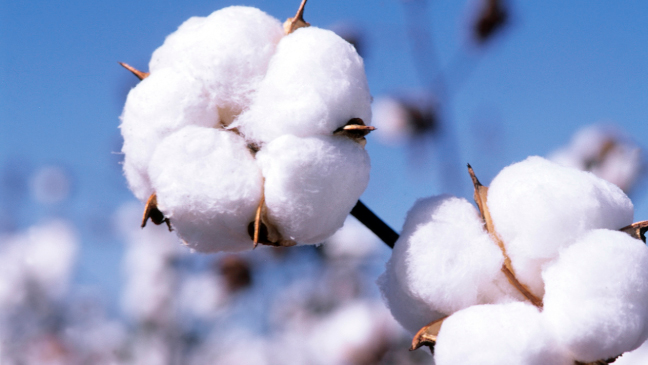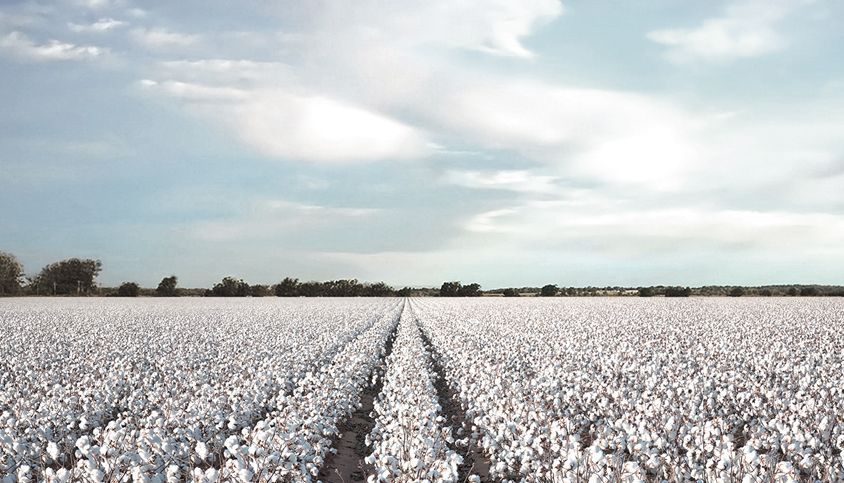FW
A worldwide market leader in digital textile printing, Kornit Digital, is to present its new high-productivity, low-cost-per-print Vulcan system at ITMA 2015, which is to be held in Milan. Kornit Digital caters directly to the needs of both designers and manufacturers.
Due to its extraordinary speed and ink efficiency, Kornit's new Vulcan is a digital platform that, for the first time rivals screen printing for mid-to-long runs. Vulcan users can reduce the cost per print by up to 40 per cent compared to the company's current systems. More textile printers and garment decorators can benefit from digital printing advantages, which include drastically reduced turnaround times, mass customisation capabilities and the elimination of set-up costs, coupled with significantly reduced labour and manufacturing space with Kornit Vulcan.
Kornit's VP of Product Development, Oded Kraft said that the Kornit Vulcan significantly expands the addressable market for digital direct-to-garment printing by offering a true alternative to large scale screen printing manufacturing. Kornit made the decision to create a first of a kind versatile system able to run small, medium and large batches at extremely high speeds and with an easy-to-use user interface, due to the continued trend towards large-scale manufacturing of relatively small batches of discrete designs, he said.
It is the most cost-efficient way to produce quantities beyond 100 shirts per print run, while being capable of customising each shirt, with its very low printing cost per print, he added. Besides, for existing custom decorators as well as web to print solution providers, the Vulcan offers an optimal solution. Kraft stated that the Vulcan was an exciting incremental step in their mission to deliver competitive digital solutions that eliminate environmental impact in an industry, which has struggled to meet global standards.
www.kornit.com
Accord has received appreciation for its action-plans taken in the RMG sector in Bangladesh, by the Swedish multinational retail-company Hennes & Mauritz-H&M. The brand stated that Accord is an important initiative in this sector.
The company while stating that the work being done within the Accord is making the industry safer, also said that it’s committed to support Accord continuously as well as the Bangladeshi textile industry. However, the brand added that there were some challenges that other collaborating participants within the Accord and they themselves were tackling. Inspection of 1,600 of factories is being done by Accord and all the factories that H&M is working with, which is less than 300, meet the Accord requirements for operation. Almost 60 per cent of the remediation work is completed where H&M is the lead brand. Accord is experiencing some delays regarding the remediation process says H&M. It stated that though they were greatly concerned with any delay, it was also very important for them that measure are taken according to the to the high quality standards agreed between the Bangladesh Government and the Accord and Alliance.
The brand further said that an active involvement and commitment by brands in the remediation process is crucial and that H&M is one of the 200-odd brands that have signed the Accord. It has been actively contributing to Accord’s progress from the start, the company added.
The brand explained that it would continue its long-term investment and offer full support to its suppliers in improving and upgrading their production facilities to safer and higher international standards and their management capabilities, allowing them to become competitive in a sustainable way.
www.hm.com
A plunge of around 26 per cent in seed cotton arrivals has sent shockwaves throughout Pakistan, from growers to the textile and clothing sectors. The crop has suffered a major setback because of heavy rain and floods both in Sindh and Punjab.
Output in Punjab, which produces around 80 per cent of the commodity, suffered a decline of 32.7 per cent. Cotton production in the Sindh province witnessed a shortfall of 19 per cent. The country’s cotton production since the start of this season to September 30, 2015 stood at 3.073 million bales compared to 4.135 million bales during the same period of last season. This means the country’s output was down by 1.061 million during the period under review.
Strong demand for cotton amid short supply is pushing prices higher with each passing day. By contrast, the dynamics of the world cotton market are quite the opposite, where prices are under pressure amid surplus supply. The flow of seed cotton from cotton fields to ginneries during the September 15 to 30, 2015 remained extremely sluggish. The textile industry procured less cotton this season compared to the last season. The unsold stocks of cotton lying with ginners, however, remained close to that of last season.
The number of ginning factories operational in the cou¬ntry is 753 at present — 507 in Punjab and 246 in Sindh.
If the Trans-Pacific Partnership (TPP) deal comes through, Bangladesh may lose its competitiveness in the apparel trade. TPP would create a preferential trade zone between 11 countries, including Vietnam, Bangladesh's direct competitor in the global apparel market, and the US, Bangladesh’s single largest garment export destination.
Vietnam will be a big beneficiary from the deal. At present, Bangladesh pays 15.62 per cent duty for its garment exports to the US whereas Vietnam pays 8.38 per cent. If the TPP is signed, garment exports from Vietnam will enter the American market completely duty-free. If Bangladesh had been a strong player in raw material exports such as yarn, fabrics and fibers, it would have benefited from the deal. But Bangladesh does not export garment raw materials.
Bangladesh’s garment exports to other TPP nations like Canada, Japan, New Zealand, Australia and Chile might not be hampered, as it already enjoys zero-duty benefit to those countries. In the meanwhile the average tariff of Bangladesh is 55 per cent, which is too high for openness of the country's business.
TPP is a comprehensive agreement that will open markets, set high-standard trade rules and address 21st-century issues in the global economy. In so doing, it will promote jobs and growth in the US and across the Asia Pacific region.
Turkey and Vietnam are two of the biggest buyers of US cotton. The importance of China as a shipping destination has slipped, but China will continue to rank in the top five US customers.
China will continue to require high qualities from the US to mix with their local cotton in an attempt to produce a marketable yarn. Adding to that need is the ongoing weather problem facing the Chinese 2015 crop that has created yield and quality losses – making the Chinese depend on the US.
To date, the US has harvested some 5,00,000 bales of high quality cotton, and about 3,50,000 bales of this have been sold. The real troublesome note for the market has been that it has not been able to hold any daily highs, even with prices so near the contract lows. While not truly challenging contract lows, far too much trading has occurred near the lows, as if there is not any upside potential for cotton.
There is a very thin level of overhead price resistance. Cotton remains seven to ten cents underpriced. Hand-to-mouth buying has served the mills well for two years. World production of cotton faces a cut of a much as three million before the year is completed.
The Partnership for Sustainable Textiles—An Opportunity for Global Supply Chains was organised by FICCI in association with Konrad-Adenauer-Stiftung (KAS), on October 5, 2015 at Federation House.
Hans-Joachim Fuchtel, Parliamentary State Secretary, Ministry for Economic Cooperation and Development, of the Federal Republic of Germany and Chairman of the Board of Governors of the Asian Development Bank addressed the discussion. The objective was to provide profit to the Indian textile and garment industries. The discussion aimed at bringing about continuous improvement of social, ecological and economic sustainability along the entire textile chain.
Fuchtel said that given that globally, India is the second biggest producer of cotton and for processing of textiles and garments, the Indian textile and garment industries are of great importance at all levels of the value chain.
Improvisation of conditions along the complete textile value chain is the aim of Germany's partnership for sustainable textiles. More than 150 member organizations are part of the alliance and at present it covers about 45 per cent of the German textile retail industry and aims at a long-term market coverage of 75 per cent.
The aim of the partnership is to bring about continuous improvement of social, ecological and economic sustainability along the entire textile chain. Immediate Past President, FICCI, Sidharth Birla, said that the Indian textiles sector is dependent on exports in a major way. Annually, India exports over $1.8 billion of textiles and textile items to Germany at present. Hence, it is important that the Indian textile industry gets integrated in the global supply chain. Birla added that today, the world is fast moving towards sustainable solutions and sustainable supply chain and Germany is the global leader in such sustainable and smart solutions.
www.ficci.com

Hemp makes a comeback

One of the oldest cultivated crops, hemp has a rich and colourful history from cloth, paper, food, to building materials, fuel, plastic, etc. Canada has fully embraced the recent demand for hemp. It grows almost $1 billion worth of hemp per annum, which equates to $250 net profit for each acre. It can be compared to soy, which is the US version of a major crop, which averaged around $71 per acre last year.
A report in Los Angeles Times says American demand for omega-balanced hempseed oil majorly caused Canada’s windfall. However, hemp is also a go-to material for dozens of applications all over the world. US still lags behind while Canada reaps the financial benefits of the plant. President Obama removed it from the Controlled Substances Act last year— as long as it was used for agricultural research. This was in step towards legalising hemp for industrial uses. A few states though, are weary of the slow pace of the Feds and are taking decisions on their own, by passing legislation to import hemp seed for pilot programmes. However, the DEA has been slow in reading the memo.
The agency seized a 286-pound shipment of Italian hemp seed bound for Kentucky’s state agriculture department in May last year. According to the Los Angles Times, after a weeklong standoff, the Federal Agency had to be reminded by the federal courts that the law had changed and Kentucky’s seed imports were legal.
However, one of the most desperately needed uses for the plant involves the creation of durable and eco-friendly fabric—especially considering the damaging effects of conventional cotton production. This means, cotton riddled with pesticides is an ecological and health threat. The crops need load of irrigation and is largely grown in dry regions of the world where water is scarce, such as Egypt, China’s Xinjiang province, California and Texas.
Cotton’s devastating impact
Aral Sea and Central Asia are classic examples of the devastating effects of the crop. Besides, farmers are using more water in their fields to combat rising level of water and soil salinity in the area, which adds to the problem. It takes 1,800 gallons of water to grow enough cotton for one pair of blue jeans on an average. Apart from water consumption, use of pesticide is also high in conventional cotton, thus harming and killing countless farm-workers around the world each year.
Hemp on the other hand, stands out over cotton, when it comes to environmental and health impacts. Hemp produces up to three times the amount of usable plant material per acre than cotton and it also requires very little pesticide or fertiliser as it can grow in a variety of conditions/soils.
Water use for hemp is about half of what is required for cotton and hemp actually enhances soil as with long roots up to six feet deep, the plant aerates and breaks up soil. Besides, it also helps to clean soil contaminated with heavy metals, solvents, pesticides and gasoline. Hemp has 3-8 times the tensile strength of cotton, and four times the warmth and absorbency, making it exceptionally durable. It also breathes and wicks moisture away from the skin more efficiently than cotton.
On Monday evening, October 5, 2015, Textile Exchange’s Textile Sustainability Conference kicked-off with a cocktail reception and launch of the partnership between the event’s title sponsor, C&A Foundation and WWF’s Conservation through Cotton project in Mumbai.
The line-up to follow will consist of breakout discussions with topics including: animal welfare, cellulosic materials, government regulations and a round session of interactive networking in the form of speed dating for buyers and sellers. The closer for the first full day of the conference will be a thematic fashion show and networking dinner, hosted by Pratibha Syntex.
The event discussion can be followed on social media by searching #TExtileConf. Additional information is made available at Etouches.com/textileconf. Textile Exchange (TE), founded in 2002, is a global nonprofit organization that works closely with all sectors of the textile supply chain to find the best ways to minimise and even reverse the negative impacts on water, soil, air and human population created by this $1.7 trillion industry. TE accomplishes this by providing the knowledge and tools this industry needs to make significant improvements in three core areas: materials, integrity and supply chain.
</br>On Monday evening, October 5, 2015, Textile Exchange’s Textile Sustainability Conference kicked-off with a cocktail reception and launch of the partnership between the event’s title sponsor, C&A Foundation and WWF’s Conservation through Cotton project in Mumbai.</br>
</br>The line-up to follow will consist of breakout discussions with topics including: animal welfare, cellulosic materials, government regulations and a round session of interactive networking in the form of speed dating for buyers and sellers. The closer for the first full day of the conference will be a thematic fashion show and networking dinner, hosted by Pratibha Syntex. </br>
</br> The event discussion can be followed on social media by searching #TExtileConf. Additional information is made available at Etouches.com/textileconf. Textile Exchange (TE), founded in 2002, is a global nonprofit organization that works closely with all sectors of the textile supply chain to find the best ways to minimise and even reverse the negative impacts on water, soil, air and human population created by this $1.7 trillion industry. TE accomplishes this by providing the knowledge and tools this industry needs to make significant improvements in three core areas: materials, integrity and supply chain. </br>
www.textileexchange.org
India has beaten China to become the world’s largest cotton producer in 2014/15. And the gap in production is set to widen considerably. Despite a projected two per cent decline in India’s output in 20151-6 from a year earlier, thanks to a deficient monsoon, the country’s share in global cotton production is set to rise to 27 per cent from almost 25 per cent in 2014-15. However, higher output doesn’t mask the stark reality that India’s cotton yield is just above a third of China’s and much lower than the global average.
Experts fear the surplus local production in 2015-16 could worsen a domestic glut and further dent local prices, as exports have plunged. Exports of cotton may remain negligible in 2015-16 owing to a massive fall in purchases by China, which typically accounted for over 70 per cent of India’s outbound shipments of the fiber.
China, the world’s largest cotton consumer as well as importer, has been attempting to move away from labor-intensive sectors like garments to more capital-intensive ones. The country has been offloading stocks from its huge reserves and also trimming subsidy support to cotton farmers for over a year now as wage costs have been soaring.
The 41st India Knit Fair showcasing collections for Autumn/Winter 2015 and summer 2016 concluded on October 9, 2015 at IKFA Complex, Tirupur, India. Participants displayed their innovative collections including pullovers, cardigans, dresses, skirts, hooded T-shirts, shorts, pajamas, blouses, golfing Polo shirts, underwear, boxers shorts, nightwear, leggings, sweatshirts, bustier sets, washed look garments, jogging suits, swimwear, track suits and so on apart from an extensive collection of cotton blended garments for men, women, children and babies.
Tirupur is known as knitwear town and is just 38 km away from the Coimbatore Airport. The 42nd edition of India Knit Fair will return from May 11 to 13, 2016.












